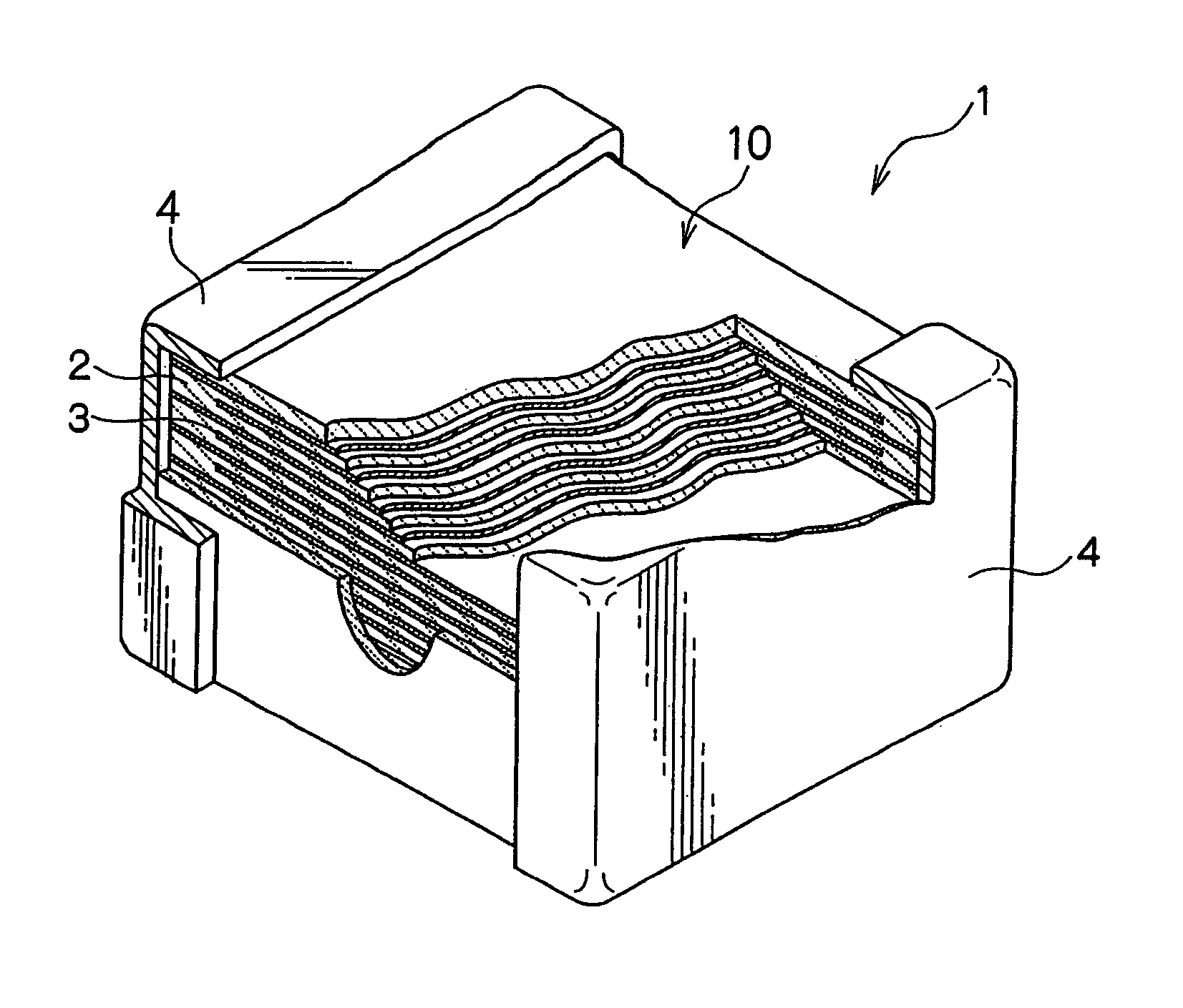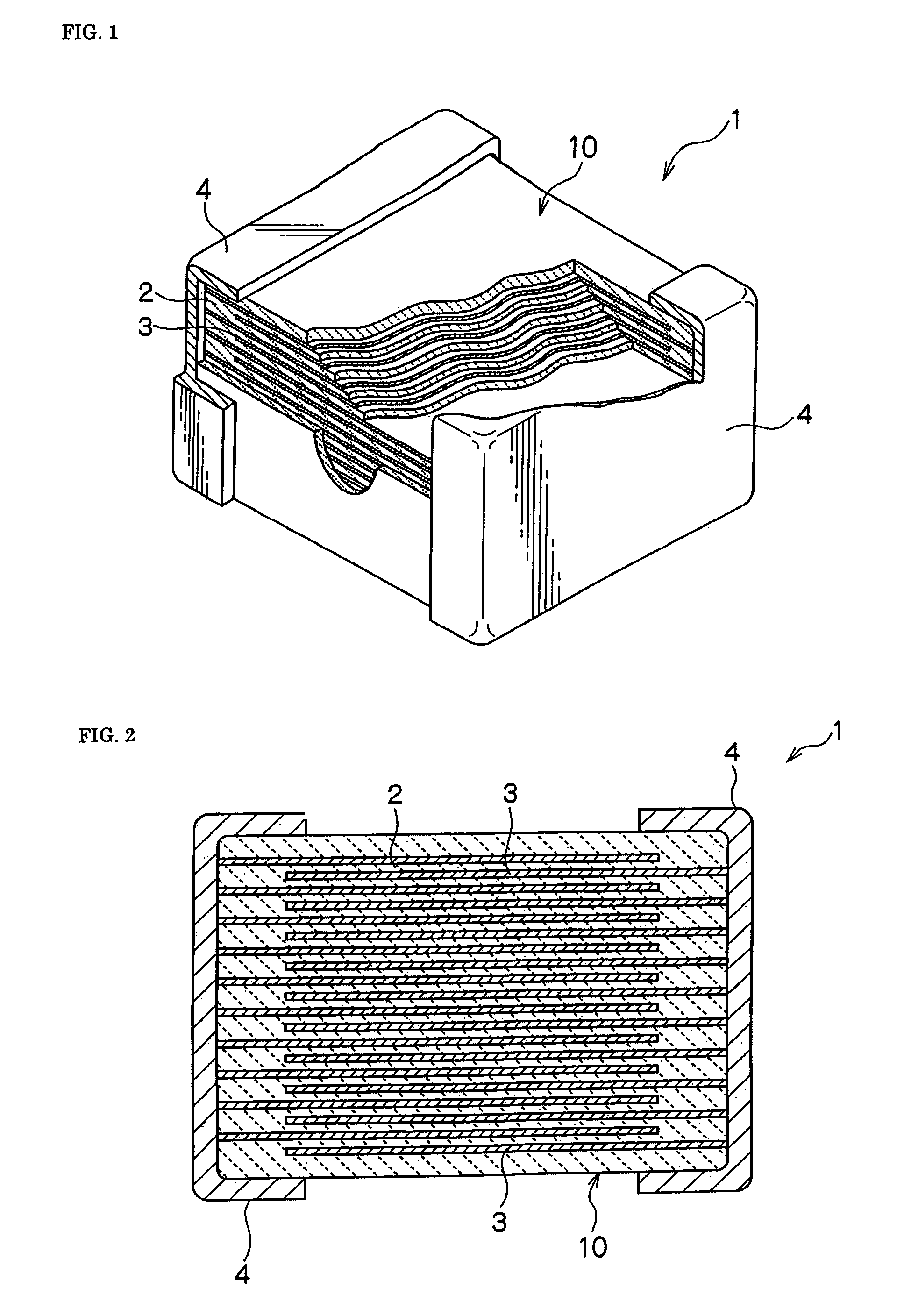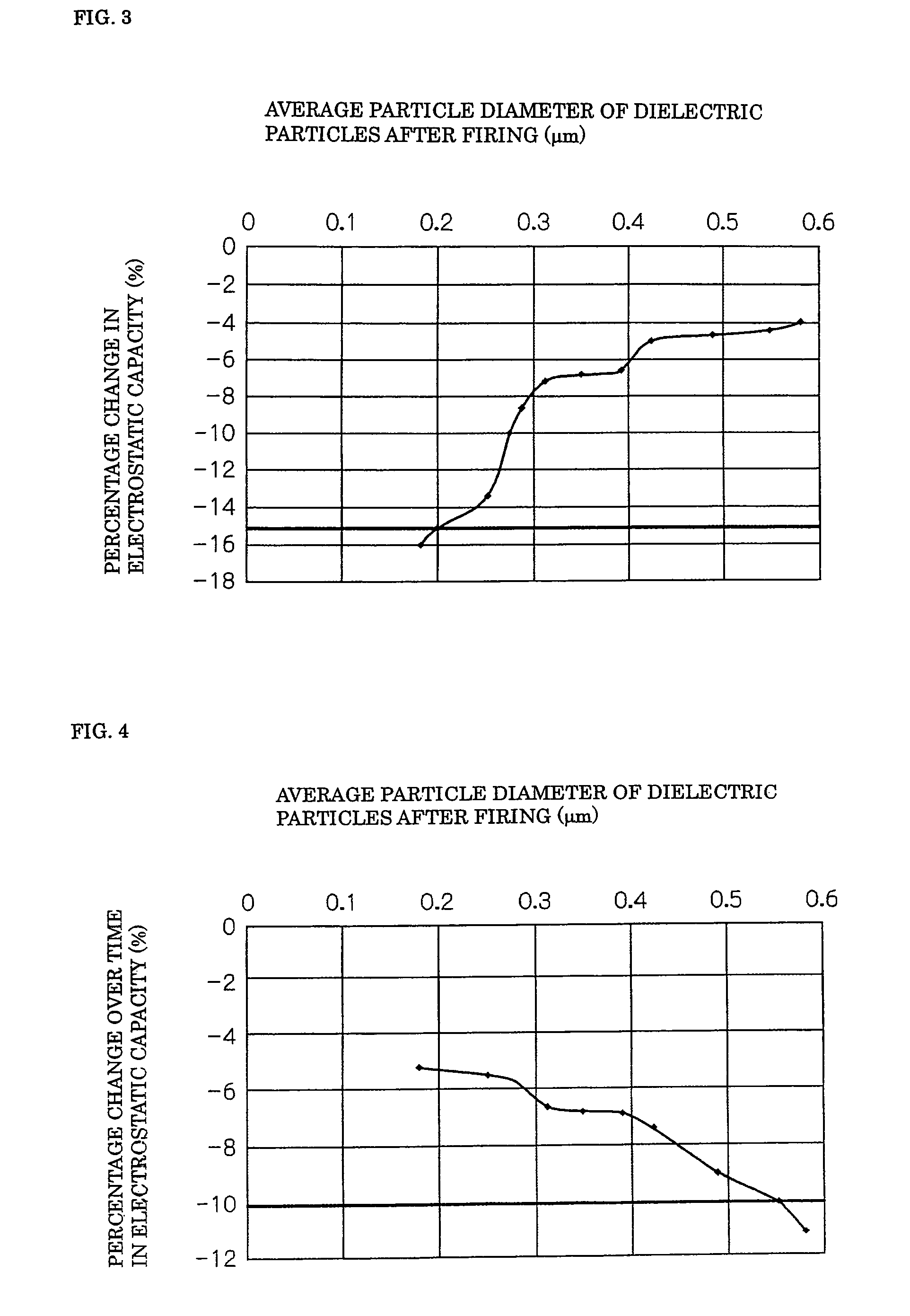Laminated ceramic capacitor
a ceramic capacitor and laminate technology, applied in ceramics, fixed capacitors, electrical equipment, etc., can solve the problems of reducing specific resistance, oxidizing of internal electrode layers, and high price of pd, and achieve excellent tc bias characteristics, small change over time in capacitance, and significant increase in usefulness of multi-layer ceramic capacitors
- Summary
- Abstract
- Description
- Claims
- Application Information
AI Technical Summary
Benefits of technology
Problems solved by technology
Method used
Image
Examples
example 1
[0089]At first, as a starting raw-material for producing a dielectric material, a primary constituent (BaTiO3) and a first to a seventh accessory constituents each having an average particle diameter of 0.1 to 1 μm were prepared. With respect to BaTiO3, raw material powders were prepared so as to have an average particle diameter of about 0.1 to 0.33 μm and a specific surface of 3 to 8.5 in the measurement by a nitrogen absorption method. Specifically, 12 types of BaTiO3 powder having a specific surface of 2.7, 3.5, 3.8, 4.1, 4.4, 4.8, 5.0, 5.4, 6.0, 7.0, 7.7, or 8.5 were synthesized by a solid-phase method. The method for preparing BaTiO3 having a specific surface within the above-mentioned range is not limited to the solid-phase method. A liquid-phase method which is generally used may be employed.
[0090]Carbonates were used as raw materials for MgO and MnO (a first accessory constituent: MgCO3, a seventh accessory constituent: MnCO3). Oxides were used as raw materials for other ac...
PUM
| Property | Measurement | Unit |
|---|---|---|
| particle diameter | aaaaa | aaaaa |
| particle diameter | aaaaa | aaaaa |
| particle diameter | aaaaa | aaaaa |
Abstract
Description
Claims
Application Information
 Login to View More
Login to View More - R&D
- Intellectual Property
- Life Sciences
- Materials
- Tech Scout
- Unparalleled Data Quality
- Higher Quality Content
- 60% Fewer Hallucinations
Browse by: Latest US Patents, China's latest patents, Technical Efficacy Thesaurus, Application Domain, Technology Topic, Popular Technical Reports.
© 2025 PatSnap. All rights reserved.Legal|Privacy policy|Modern Slavery Act Transparency Statement|Sitemap|About US| Contact US: help@patsnap.com



